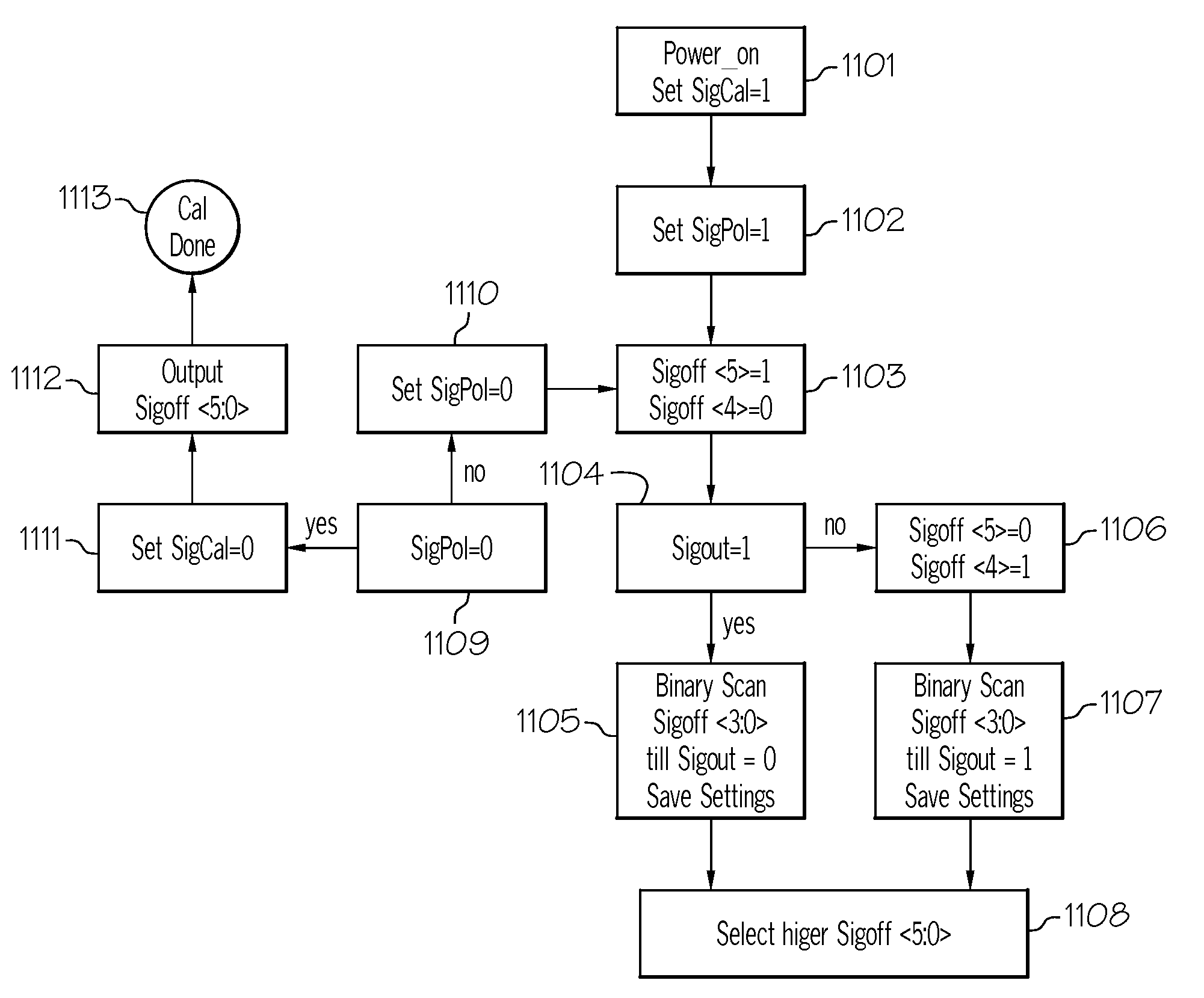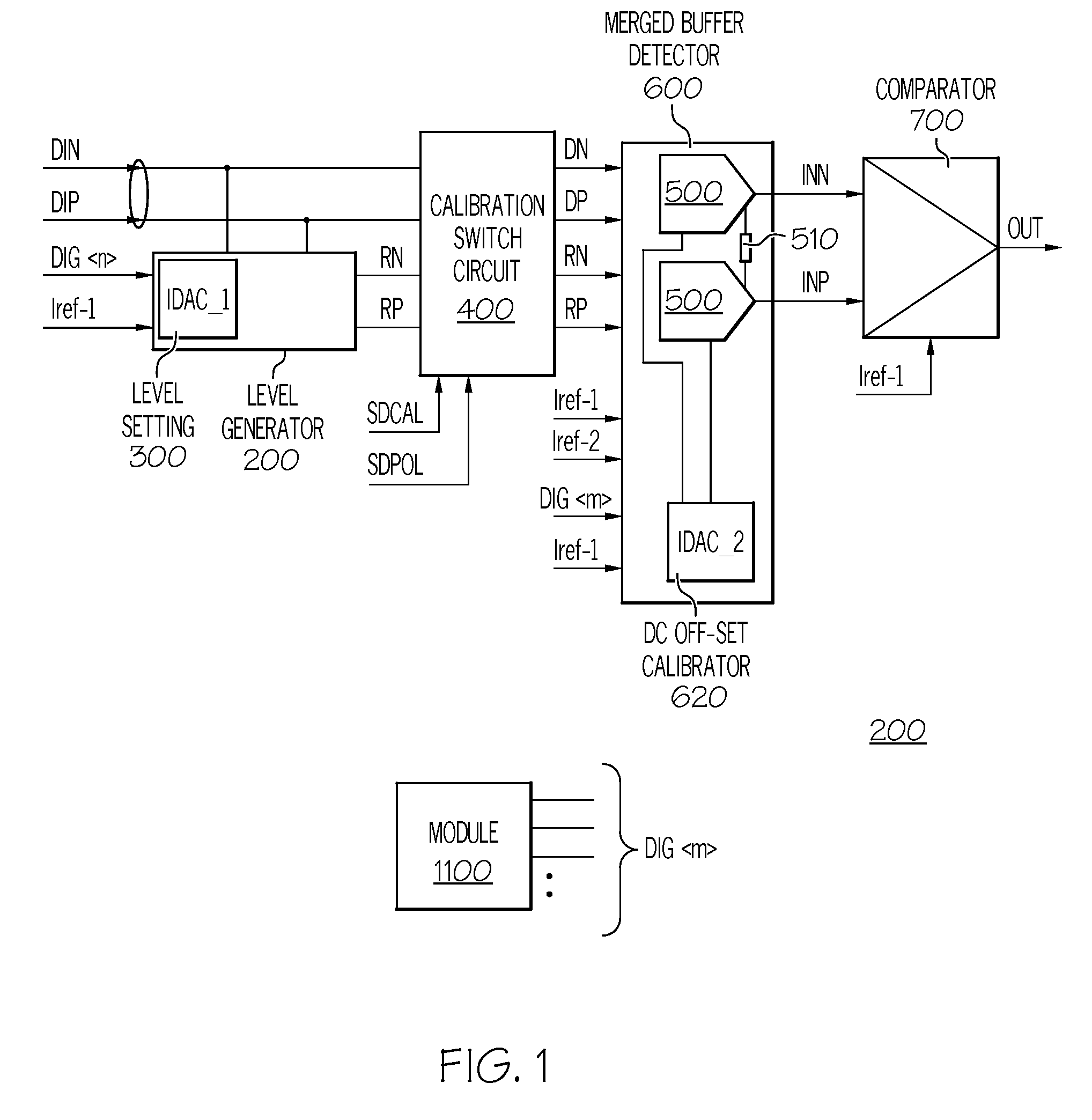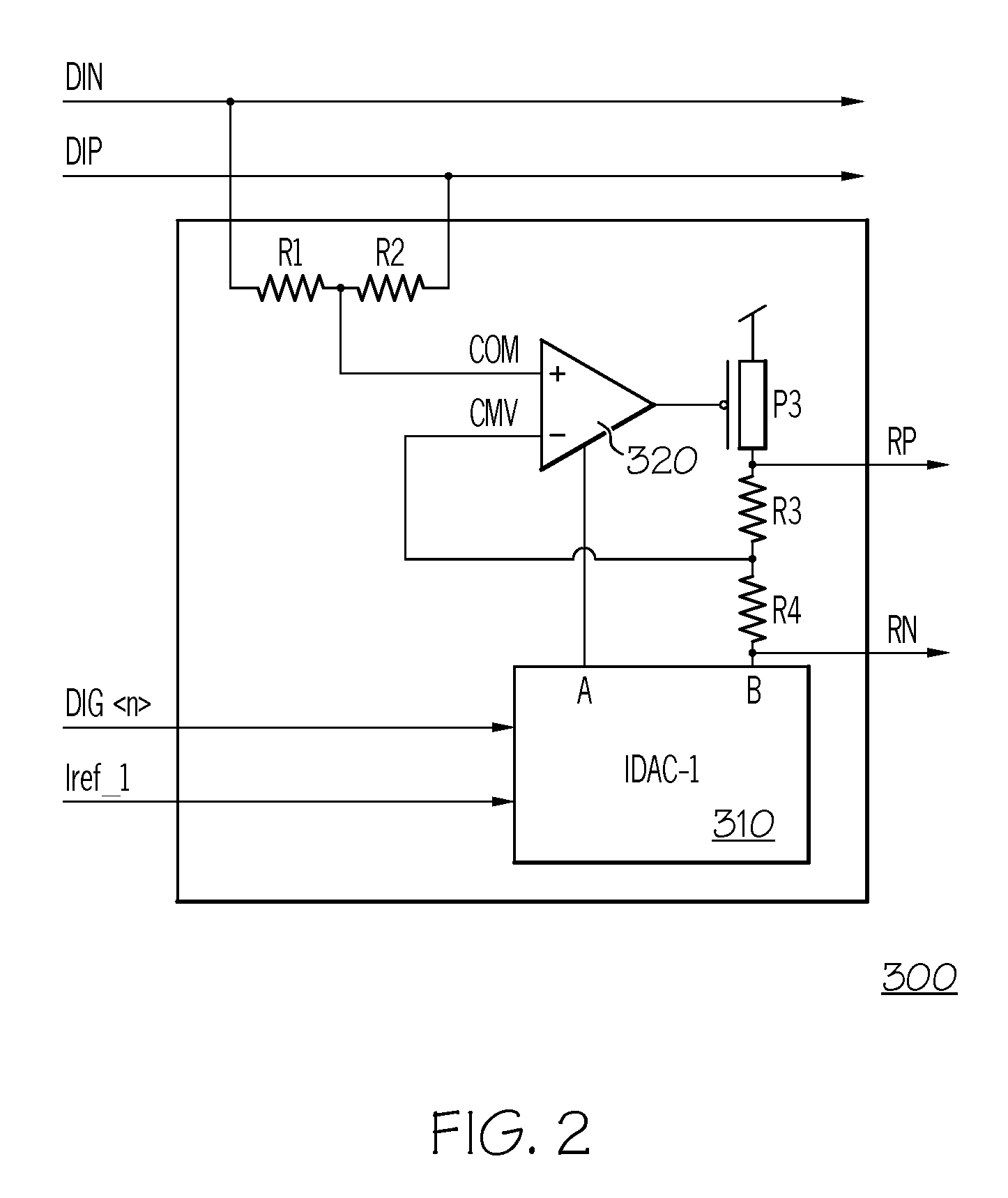Signal Detector with Calibration Circuit Arrangement
a signal detector and circuit arrangement technology, applied in the field of signal detection circuits, can solve the problems of invalid data, system errors, and inability to reliably detect signals, and achieve the effect of eliminating the inherent differential signal imbalan
- Summary
- Abstract
- Description
- Claims
- Application Information
AI Technical Summary
Benefits of technology
Problems solved by technology
Method used
Image
Examples
Embodiment Construction
[0028]Designing a robust signal detector to meet a wide range of customer specifications is definitely not an easy task. The task includes the requirement of detecting incoming signals with a narrow signal amplitude window and spanning wide ranges of signal frequency, common mode level, supply voltage, and operating temperature. The goal is to design a single signal detector that fits these and other requirements. The one design fits all is certainly an ideal goal in an ASIC environment to save development, manufacturing, testing and maintenance cost. Some customer specifications have a very small margin separating valid signal amplitude from noise. For example, in the Infiniband architecture specification, signal and noise peak-to peak amplitudes are defined as 87.5 mV and 42.5 mV, respectively. In other words, a signal detector must detect the presence of valid signal when the incoming signal has a peak-to-peak amplitude greater than 87.5 mV. On the other hand, it must detect abse...
PUM
 Login to View More
Login to View More Abstract
Description
Claims
Application Information
 Login to View More
Login to View More - R&D
- Intellectual Property
- Life Sciences
- Materials
- Tech Scout
- Unparalleled Data Quality
- Higher Quality Content
- 60% Fewer Hallucinations
Browse by: Latest US Patents, China's latest patents, Technical Efficacy Thesaurus, Application Domain, Technology Topic, Popular Technical Reports.
© 2025 PatSnap. All rights reserved.Legal|Privacy policy|Modern Slavery Act Transparency Statement|Sitemap|About US| Contact US: help@patsnap.com



